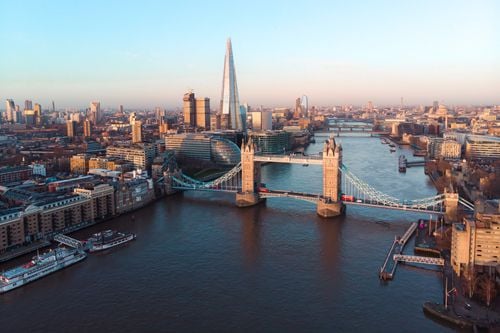Dolmabahce Castle, one of the most opulent mansions in the world, was built in the 19th century to house one of the last rulers of the Ottoman Sultanate. The castle is flanked by manicured lawns and has a huge corridor of 56 columns with 750 lamps lit by the hues of the crystalline chandelier. The interior design, furniture, velvet carpets and curtains are all in good condition.
Majestic and opulent, Dolmabahce Palace amazes everyone. Set in vast grounds on the banks of the Bosphorus, even from the outside, Dolmabahce Palace is an impressive sight. Its true beauty is revealed above all inside the palace, which is sumptuously decorated from floor to ceiling with gold and crystal.
Built in the mid-nineteenth century, the palace became the home of the sultan and his family, and the administrative centre of the Ottoman Republic until 1922. This sumptuous palace depicts the last days of the great Ottoman Empire and also makes reference to the style of Western palaces. The sheer size, decoration, interior design and garden landscapes are a feast for the eyes, and words are not enough to describe the beauty of this palace. A three-hour visit immerses you in a sparkling, turbulent history and rich culture.
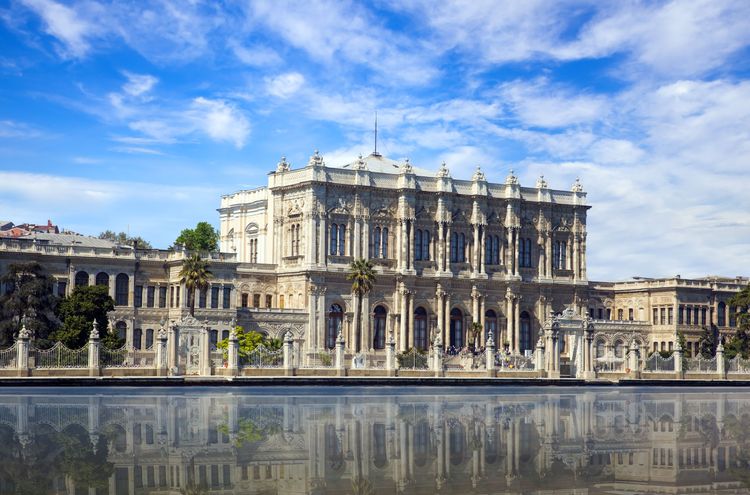
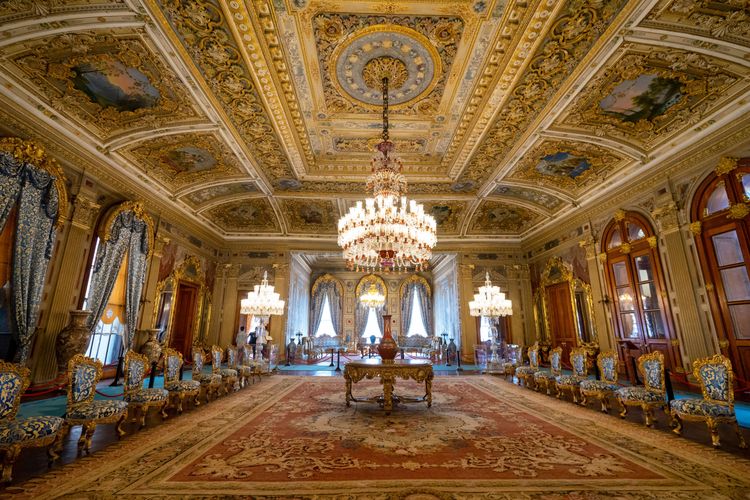
Dolmabahçe Palace boasts unique decorations, architectural details, handmade carpets, handcrafted chandeliers, a glass pavilion and collections of objects. Dolmabahce Palace was built over an area of more than 110,000 m2 and was made up of sixteen separate parts, not including its main structure. The parts were devoted to a variety of activities; from palace-like stables and pharmacies to kitchens, manor houses, glass houses, foundries and pastry shops.
 Istanbul
Istanbul
Bosphorus Palace Hotel
Magnificent Palace on the banks of the BosphorusArchitecture, decoration and design
Built by Sultan Abdulmecid's court architect, Karabet Balyan, between 1843 and 1956, the Dolmabahce Museum features many different architectural styles. The sultans had several palaces, but Topkapi was the official residence until Dolmabahce was completed.
The Istanbul palace spans three floors with over 200 rooms and 40 halls. Impeccably manicured gardens surround the palace, and a ballroom boasts immensely high ceilings. The sultan would have received his guests in this room, and the wing behind the ballroom would have been the harem.
""Very beautiful palace, very well maintained, we were particularly amazed by the huge crystal chandeliers and the main rooms. WC and restaurant on site. Access from the tram (Kabatas terminus, then a few minutes walk along the platform and road to the main entrance)." "
The palace thinks big: the sumptuous design is enhanced by intact light fittings. The ceilings and walls feature various paintings by famous artists of the time. All the furniture and halls are in different shades, and expensive Turkish carpets rest on the wooden floors.
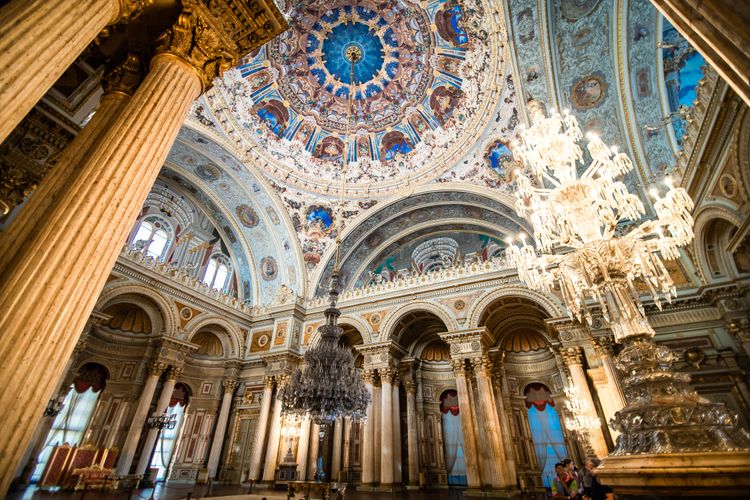
In the ballroom, overlooking Istanbul's Bosphorus strait, hangs a magnificent crystal chandelier donated by Queen Victoria, consisting of four and a half tonnes of crystal. The orchestra sat in the upper ballroom, and an underground system heated the rooms.
Guided tour of the palace
The tour of the palace begins in the main entrance hall near the English chandelier with its sixty arms. The guide takes visitors through the secretarial room, the entrance hall and the exhibition hall, with all the different precious objects in gold, silver, porcelain and crystal. After the crystal staircase with its Baccarat balustrade, the tour becomes increasingly breathtaking, particularly as they enter the ambassador's room.
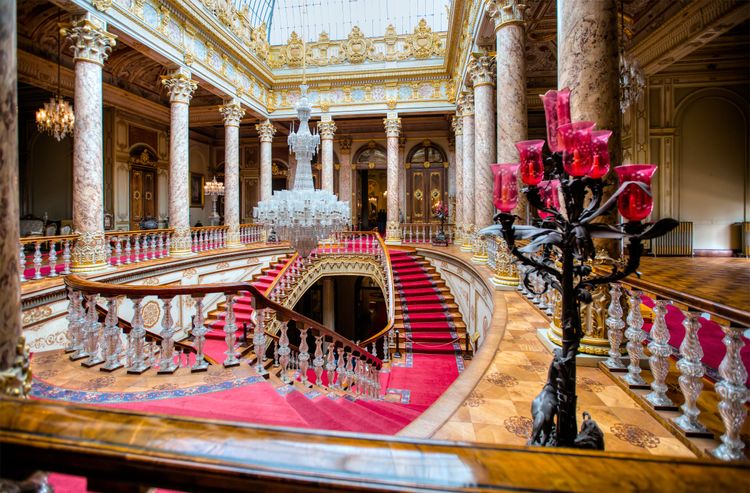
This room was once used for receptions and formal meetings, and now features an Iranian carpet, a bearskin (a gift from Russian Tsar Nicholas II), and an Egyptian silver clock telling the time, date, air pressure and temperature. We wander through the corridors, discovering the study room with its Steinway piano dating from 1911, followed by the hammam with its portraits and paintings.
But all this is just a prelude... the final bouquet takes place in the muyade room. It covers around 2,000 m2, is 36 metres high and has a dome 25 metres in diameter. The Hereke carpet on the floor covers 124 m2. But the masterpiece is undoubtedly the English chandelier, built in 1853, containing 664 bulbs and weighing 4.5 tonnes.
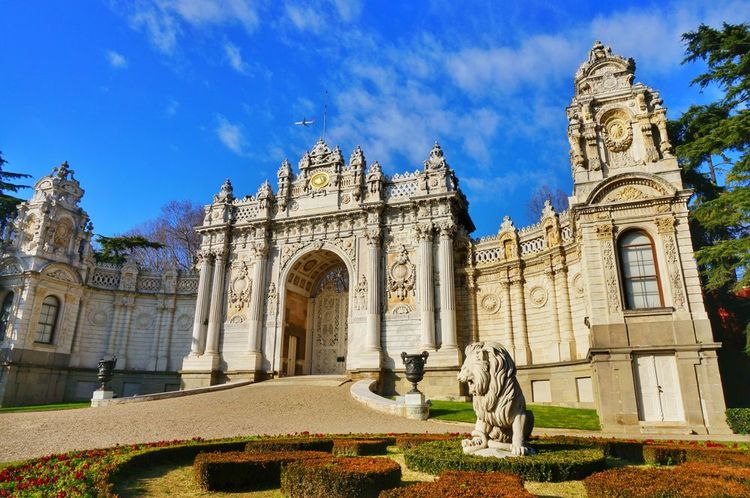
The Harem is always worth a visit. It comprises a series of salons, galleries and hammams, as well as a post-circumcision rest room. The suite of the Valide Sultan (the Sultan's mother), the blue and pink salons, and the bedroom of Sultan Abdül Aziz with its custom-made bed are all remarkable.
Mustafa Kemal Ataturk
Mustafa Kemal Ataturk was the founding father of the Turkish Republic. He came to power after leading and winning the Turkish War of Independence. After the dissolution of the Sultan and the Ottoman Empire, Ataturk used the Dolmabahce Palace when he travelled to Istanbul on business. He died in one of its rooms in 1938. The room in question is open to the public and has its clock set to the exact time of his death. Before the government moved his body to Ankara, he lay here for the public to pay their last respects.
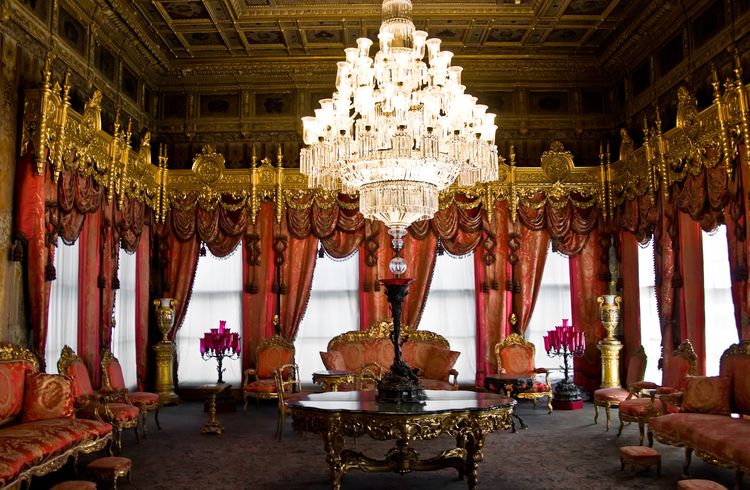
Practical info
Photography and video are not permitted in the palace, but are allowed in the gardens. Admission to the palace is limited to 3,000 people per day, and visitors must take a guided tour.
Entrance fee: the entrance fee to Dolmabahce Palace is €2.
Opening times: Dolmabahce Palace is open to visitors from 9am to 4pm every day of the week, except Mondays and Thursdays.



